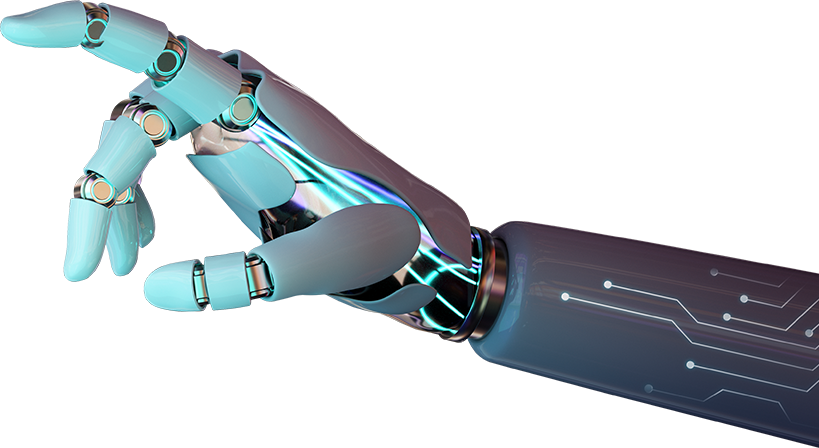Unlocking the potential of technology in healthcare offers a glimpse into a future where diagnostics are faster and more accurate. Imagine a world where computer vision transforms medical imaging, improving outcomes and efficiency. This isn’t science fiction—it’s happening now. Dive into how these advancements are reshaping the medical landscape and enhancing patient care.
Table of contents
ToggleUnderstanding computer vision in healthcare
Computer vision in healthcare leverages advanced algorithms to analyse medical images, aiding in diagnostics. Machine learning enables systems to detect patterns, enhancing diagnostic accuracy. It automates image processing, reducing human error and time consumption. Understanding its integration requires recognising its diverse applications:
- Detection of anomalies in X-rays and MRIs
- Segmentation of organs in CT scans
- Monitoring of patient conditions through video analysis
- Facilitating robotic surgeries with precision
Adopting these technologies demands focused training and robust infrastructure.
What is computer vision?
Computer vision in healthcare involves the use of AI to interpret visual data. It mimics human sight to analyse medical images with precision. This technology aids in diagnosing conditions by recognising patterns. Mastering decoding computer vision techniques is crucial for effective implementation.
Key applications in healthcare
Computer vision in healthcare offers transformative potential. It revolutionises diagnostics and treatment through various applications.
- Medical Imaging: Enhances MRI and CT scan analysis.
- Pathology: Assists in identifying disease patterns.
- Ophthalmology: Improves eye disease detection.
These real-world uses enable precise diagnostics, reducing human error. Professionals benefit from streamlined workflows and improved patient outcomes.
Benefits of computer vision for diagnostics
Integrating computer vision in healthcare offers transformative benefits, enhancing diagnostic precision and efficiency. This technology supports clinicians by analysing complex data quickly, leading to timely interventions and improved patient outcomes.
- Boosts diagnostic accuracy through precise imaging analysis.
- Reduces time spent on manual image examination.
- Facilitates early detection of diseases with advanced algorithms.
Improved accuracy in medical imaging
Computer vision revolutionises medical imaging by enhancing diagnostic precision. This technology aids in detecting minute anomalies that might elude the human eye. Its integration offers a robust tool for radiologists and clinicians, ensuring more reliable interpretations. Key benefits include:
- Automated detection of complex patterns in scans.
- Reduction in human error rates.
- Improved consistency across diagnostic results.
- Enhanced ability to monitor disease progression.
Adopting computer vision in healthcare promises significant advancements in diagnostic accuracy.
Enhancing efficiency in diagnostics
Computer vision revolutionises diagnostics by streamlining processes and reducing human error. Automated image analysis allows rapid identification of anomalies, enhancing diagnostic efficiency. This technology supports healthcare professionals, freeing time for patient interaction and improving overall care quality.
Integrating computer vision into medical practices
Integrating computer vision into medical practices requires a strategic approach. Healthcare professionals should follow specific steps to ensure a seamless transition:
- Assess current diagnostic processes and identify areas for improvement.
- Select appropriate computer vision technologies tailored to medical needs.
- Collaborate with IT specialists for system integration and support.
- Provide comprehensive training for healthcare staff on new tools.
- Continuously evaluate and refine processes to optimise outcomes.
Implementing these steps enhances diagnostic efficiency and accuracy.
Steps for successful integration
Healthcare institutions should first conduct a needs assessment to determine where computer vision healthcare can best enhance diagnostic processes. Collaborating with technology experts ensures the seamless integration of systems into existing workflows. Training programmes for staff must be established to build proficiency with new tools. Regular evaluations and updates keep the technology aligned with evolving medical practices.
Overcoming implementation challenges
- Identify specific healthcare needs.
- Choose compatible technology solutions.
- Engage stakeholders early.
- Develop a clear implementation plan.
- Provide comprehensive training sessions.
- Monitor and evaluate progress regularly.
Navigating computer vision implementation hurdles requires strategic planning and dedicated resources.
Training and education for healthcare professionals
- Mastering AI algorithms for accurate analysis.
- Understanding imaging techniques and data interpretation.
- Engaging in hands-on workshops and practical training.
Continuous education enhances healthcare professionals’ ability to integrate computer vision effectively. Access to targeted resources and practical experiences ensures they stay adept with evolving technologies in the medical field.
Essential skills for adoption
Healthcare professionals must acquire key skills to adopt computer vision technologies effectively. Understanding machine learning algorithms is crucial, as these form the backbone of many computer vision applications. Familiarity with medical imaging software enhances the ability to interpret and utilise data accurately. Data analysis skills enable professionals to draw meaningful insights from visual data. Basic programming knowledge aids in troubleshooting and customising software tools. Continuous learning remains essential to keep pace with technological advancements.
Resources for continuous learning
Healthcare professionals can access online courses, webinars, and workshops to enhance their computer vision expertise. Journals and publications offer insights into the latest research. Networking events provide opportunities to discuss advancements. Hospitals might offer in-house training. Continuous learning ensures up-to-date knowledge and skills in evolving medical technologies.
Future trends in computer vision and healthcare
Emerging technologies promise significant advancements in computer vision healthcare. These innovations aim to refine diagnostic capabilities and patient care. Key trends include:
- AI-driven predictive analytics for early disease detection
- Enhanced 3D imaging for detailed anatomical insights
- Wearable devices with integrated vision sensors
- Real-time data processing for faster diagnostics
- Telemedicine integration for remote assessments
These developments require strategic planning and continuous professional training.
Emerging technologies
Innovations telles que les réseaux de neurones convolutifs et les algorithmes d’apprentissage profond transforment la vision par ordinateur dans le secteur de la santé. Ces technologies permettent une analyse plus sophistiquée des images médicales, améliorant ainsi la détection précoce des maladies. L’Intelligence Artificielle et l’apprentissage automatique continuent d’évoluer, promettant des avancées significatives dans les diagnostics assistés par ordinateur.
Predictions for future developments
Computer vision in healthcare anticipates a shift towards more personalised diagnostics. Advanced AI algorithms will enable real-time data analysis, improving patient outcomes. Future systems could integrate seamlessly with electronic health records, enhancing decision-making processes. The adoption of wearable technology may further revolutionise patient monitoring. Continuous innovation promises to transform medical practices, ensuring more accurate and efficient care.
Common Questions
How does computer vision improve diagnostic accuracy?
It analyses medical images with precision, detecting anomalies and patterns often missed by human eyes. This leads to more accurate diagnostics.
What are the main challenges in implementing computer vision?
Challenges include data privacy concerns, integration with existing systems, and the need for substantial training for healthcare staff.
What skills are essential for healthcare professionals using computer vision?
Professionals should understand basic data analysis, machine learning principles, and the operation of diagnostic software tools.
What resources can aid in continuous learning for computer vision?
Online courses, workshops, and partnerships with tech companies provide valuable resources for ongoing education and skill enhancement.
What future trends can be expected in computer vision and healthcare?
Expect advancements in AI algorithms, increased automation in diagnostics, and improved integration with other healthcare technologies.






